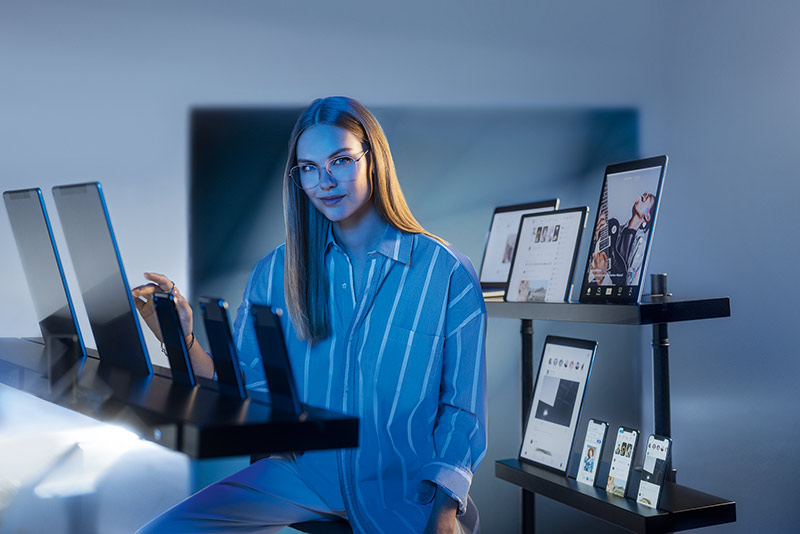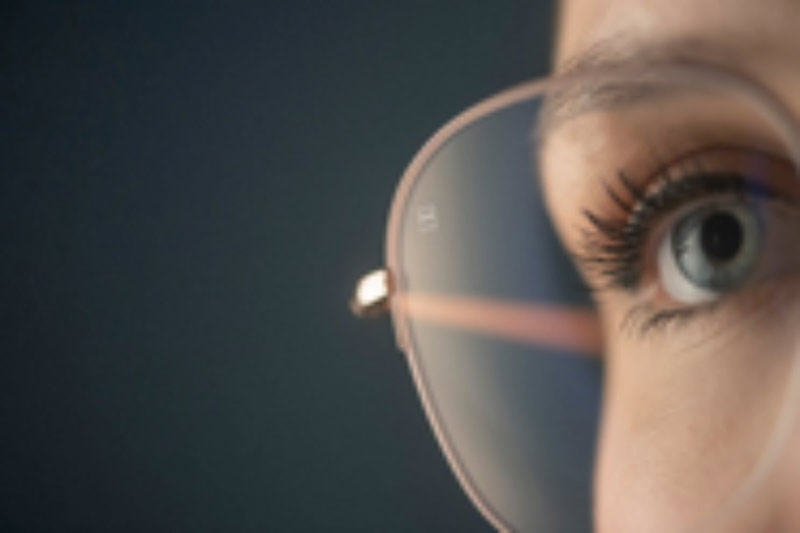Sponsored by ZEISS
By Linda Conlin, ABOC, NCLE
When it comes to blue light, the part of the electromagnetic spectrum between 380 and 500 nm, there’s good news and bad news. The good news is that blue light wavelengths between 460 and 500 nm are beneficial to our well-being by modulating circadian rhythm. The bad news is that blue light wavelengths below 460 nm have been shown to impact metabolic processes in retinal cells. But there is another point of good news. ZEISS BlueGuard lenses block up to 40 percent of potentially harmful blue light while transmitting beneficial blue light.
During 2020 and continuing today, use of digital devices at work, school and home has increased dramatically. Along with that increase, eyecare professionals have seen an increase in complaints of decreased visual comfort, asthenopic symptoms such as blurred vision, burning, painful or tired eyes, and eyestrain. The relatively high levels of energy inherent in the comparatively short wavelengths of blue light have been shown to impact metabolic processes in retinal cells. It is quite possible that excessive exposure to blue light can lead to retinal damage, in particular long-term and degenerative processes. It is still part of medical research to better determine what dose and what specific light sources have a significant damage-causing potential.

While the scientific discussion about blue light hazards continues, Dr. Christian Lappe, director of Technical Communication at ZEISS notes, “Digital screens and indoor LED lighting emit a higher proportion of blue light than traditional incandescent or halogen-type light bulbs. In addition, we are exposed to this blue light for long periods of time, often until late at night at short visual distances. This combination of excessive near work and chromatic intraocular challenges linked to blue light strains the eye muscles and can contribute to visual discomfort and asthenopic symptoms associated with digital eye strain.” One thing is certain; we could use some relief.
Lens coatings that filter potentially harmful blue light have become popular recently, but there’s a downside. Although wearers appreciate the protection, the coatings reflect a blue or violet hue that they find distracting when on video calls and meetings. Now there’s a solution. ZEISS BlueGuard incorporates the latest organic-chemical technology to make blue light blocking an integral part of the chemical structure of the lens material. As blue light blocking properties now are incorporated into the lens material, in the U.S., ZEISS BlueGuard Lenses may be ordered with hard coat or ZEISS DuraVision Platinum UV. When ordered with ZEISS DuraVision Platinum UV, a premium anti-reflection coating with its subtle blue residual reflection, the wearer does not get annoyed by irritating reflections and the eyes are clearly visible behind the lenses. Compared to the current blue light coating ZEISS DuraVision BlueProtect, the reflections of digital blue light are reduced by up to 50 percent. The result is high lens clarity with significantly lower visible reflections of digital blue light. With better cosmetic appeal, ZEISS BlueGuard Lenses block up to 40 percent of potentially harmful blue light in the wavelength between 400 and 455 nm. Based on proven UVProtect technology, ZEISS BlueGuard Lenses additionally ensure full UV protection up to 400 nm.

ZEISS BlueGuard uses the latest benzotriazole, a UV stabilizer and the UV blocker benzophenone-based lens chemistry to support UV and blue light absorption, delivering excellent color fidelity and spectral coverage. In addition, the ZEISS 1.50 index BlueGuard material uses state-of-the-art pigments to balance clarity and protection perfectly. ZEISS uses its global network to deliver ZEISS BlueGuard materials for all standard plastic lenses, indices 1.50 to 1.74.
As with all their products, ZEISS commits to extensive research and development in lenses and coatings. Because there is no industry standard to quantify blue light blocking in spectacle lenses, ZEISS developed a metric. The formula for Blue-Violet Block (BVB) measures the percentage of potentially harmful blue-violet light, between 400 and 455 nm, being blocked to minimize HEV exposure and still allow beneficial blue light. For ZEISS BlueGuard lenses, the calculation result is 40 percent. ZEISS also recognized the absence of an industry standard to measure the intensity of blue light reflected from a lens front surface. The formula for digital blue reflectance DBRLED used the display spectrum for the world’s most popular smartphone in the calculation. The calculation shows that ZEISS BlueGuard Lenses exhibit up to 50 percent less digital blue light reflection than ZEISS DuraVision BlueProtect.
A material solution that combines protection, visual comfort and aesthetics, ZEISS BlueGuard is suitable for all ages and available for the entire ZEISS portfolio of clear lenses. Learn more about blue light, wavelength-dependent effects on retinal cells, circadian rhythm and how the new ZEISS BlueGuard Lens technology increases protection and reduces reflections with our CE, “Blue Light Lenses with More Protection and Less Reflection” at 2020mag.com/ce. The course is free, courtesy of an educational grant from ZEISS.












